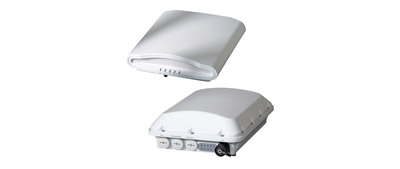
RUCKUS QoS Mirroring improves the user experience using real-time applications
Although the Wi-Fi Alliance® established worldwide Quality of Service (QoS) Management protocols in 2021, many client devices today still don't implement these QoS features. In addition, sometimes, traffic tagged with QoS prioritization can lose these attribute as it travels through the network. The result can cause latency-sensitive traffic to compete with regular traffic, which can deliver a poor user experience.
QoS Mirroring is a RUCKUS patented innovation that gives latency-sensitive traffic priority over other traffic. By mirroring downstream traffic with the same prioritization seen on the upstream side, RUCKUS APs help high-priority upstream traffic to retain its priority as it travels to the downstream side. This smart technology is available on all RUCKUS APs running the latest firmware.
Plus, because the access points (APs) identify and prioritize traffic as it travels through the network, QoS is achieved even if client devices don't support this feature.
How it works
Maintain original prioritization
As upstream traffic moves through networks, sometimes it can lose its prioritization by the time it reaches the downstream side. QoS Mirroring inspects all traffic flowing through the network and enables high-priority upstream traffic to maintain its original prioritization, which helps latency-sensitive traffic avoid congestion.
Give real-time apps high-priority status
When real-time traffic—such as voice, video conferencing, and gaming—has not been properly tagged, it’s forced to compete with asynchronous flows like file downloads and movie streaming. Classifying the traffic as high-priority ultimately improves the end-user experience.
Benefits

Prioritize traffic
QoS Mirroring ensures that latency-sensitive traffic, such as voice and video, receives priority over other traffic, even if client devices aren’t employing Wi-Fi QoS management capabilities.
Reduced latency and jitter
By prioritizing critical traffic, RUCKUS QoS Mirroring helps decrease connectivity stall and video freezing—leading to a smoother and more reliable user experience, especially for real-time applications.
Enhanced network performance
By managing critical traffic effectively, QoS Mirroring contributes to overall network performance and stability, especially in high-density environments where network congestion is often a concern.
Improve your network traffic with QoS Mirroring

RUCKUS wireless APs
Experience optimized wireless connectivity with RUCKUS indoor and outdoor access points. Our Wi-Fi network solutions are designed to provide secure, reliable access no matter how tough the environment.
Featured resources

RUCKUS Quality of Service Mirroring
See how RUCKUS Quality of Service (QoS) Mirroring feature elevates the user experience with latency-sensitive applications.

QoS Mirroring, WLPC Phoenix 2025
Join Peter Khoury, head of the RUCKUS Wireless Systems Performance Team, as he discusses QoS Mirroring and how it enhances Wi-Fi performance by ensuring real-time traffic flows receive the correct priority.
QoS Mirroring is a RUCKUS technology that preserves the QoS tagging across the network boundaries and extends consistent traffic prioritization across interfaces.
QoS management refers to the broad techniques and policies used by a network to optimize traffic. QoS Mirroring is a unique feature developed by RUCKUS, which specifically focuses on enforcing QoS tags from upstream traffic to match the downstream flow.
QoS Mirroring is only available as part of the RUCKUS access point firmware. It can only be deployed on RUCKUS Networks APs.

